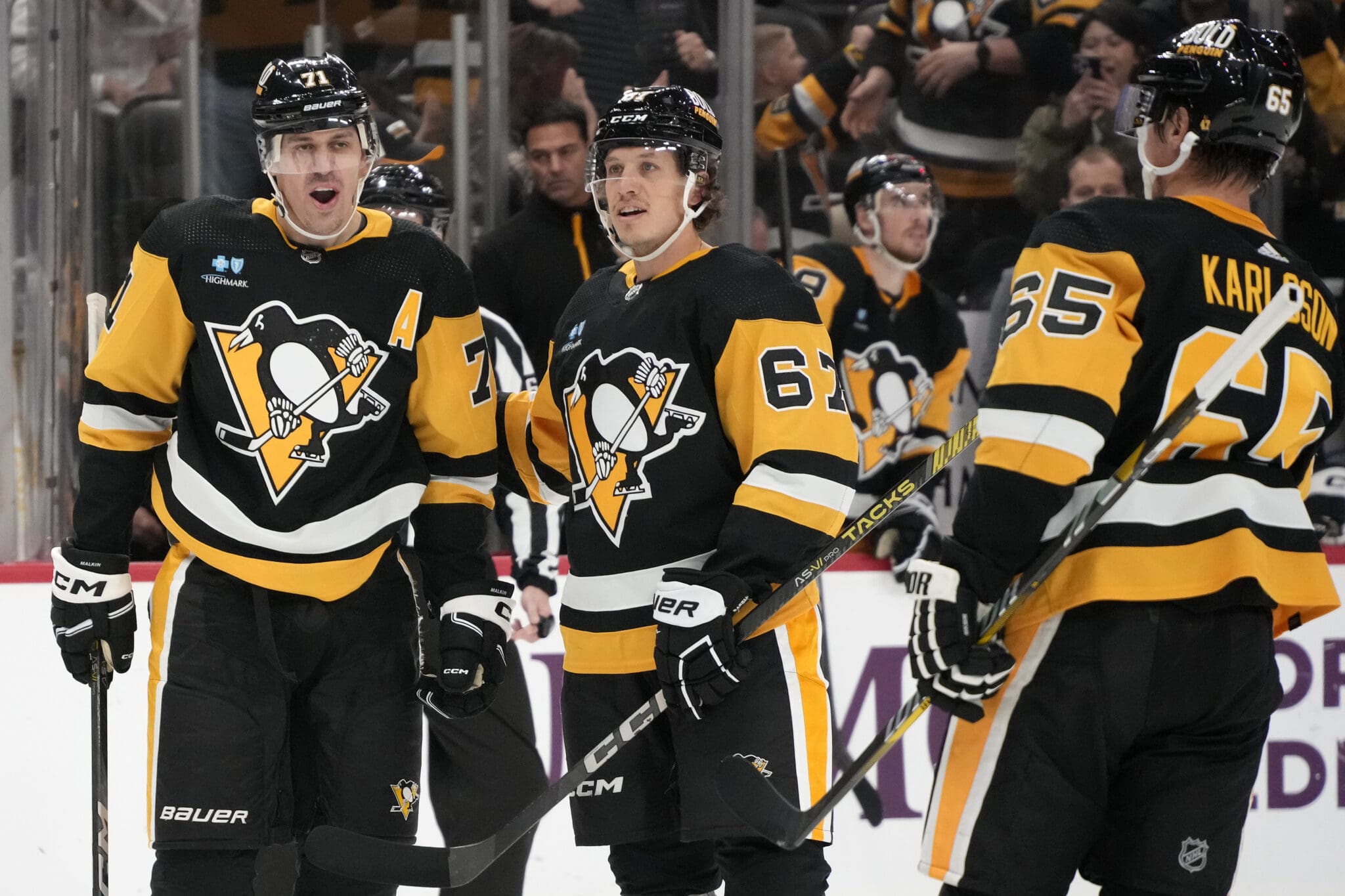Penguins
Kingerski: Before Penguins Make Changes, First Identify the REAL Problems

It took only four periods for the Pittsburgh Penguins to annihilate the progress and optimism they had been building since mid-December. Allowing a decimated Vegas Golden Knights team to skate them out of the building with a three-goal, third-period rally was bad. A heartless and disinterested performance in Arizona was the clincher.
The games weren’t just ammo for those who wanted to see the Penguins blow it up and start over; it was a vest of bullets and a cache of grenades.
There are a lot of fingers being pointed, some at head coach Mike Sullivan.
NHL coaches typically have shelf lives that rival hamsters, but Sullivan is on his third hamster. Has the team tuned him out, like the oldies station blaring Alanis Morrisette?
No, they haven’t. I don’t believe they have tuned out the coach.
Nor is his “style” or system incongruent with the assembled players. As easy as it is to say, “Fire the coach” — look closely at the Penguins’ changing style this season. Remember when we grumbled that the Penguins were trying to play a speed game without being the speediest team?
Sullivan managed to herd cats, cajoling a team that wanted to play pretty into playing good, honest, ugly hockey.
A coach without his team’s ear doesn’t get that earth-moving sort of change. It’s been far from perfect, but how many of us can truly recognize we can’t do what we once could? (Those of you under 30, just wait. It’s coming).
No, Sullivan isn’t the problem. He’s crafted and molded a system for this team.
The Penguins’ top line with Sidney Crosby is elite and playing like it.
The Penguins’ third and fourth lines have grown into useful, productive sets, largely worthy of their lineup spots.
Kris Letang and Marcus Pettersson have been very good, on the whole.
And from here, we can circle the Penguins’ issues, and they’re not coaching. It’s roster-construction, and if you must point fingers, they go toward the president of hockey operations/GM Kyle Dubas.
Cutting to the quick, it was a master stroke by Dubas to shed Jeff Petry, Mikael Granlund, and Jan Rutta in the Karlsson deal. Textbooks could be written on that deal, which freed the Penguins from bad deals made by former GM Ron Hextall.
However, what we cautioned against in July and August is also coming to fruition: There’s only one puck, and Karlsson cannot play his game without dominating it. Neither can Sidney Crosby or Evgeni Malkin.
One puck, too many players who need it.
Problem Two: One of those elite players, Malkin, is not playing at an elite level. Malkin’s game is falling fast. Perhaps it’s temporary. Perhaps it’s a mindset that can be corrected. Perhaps it’s being 37 years old. Malkin’s game is not only well below expectations, but he’s compounding his lack of production by making terrible decisions in the defensive zone.
We examined the Penguins’ nightmarish numbers when Malkin and Karlsson are on the ice together. Such a problem seems to have been predictable and goes well beyond a coach’s ability to “control” or manage his team. Obviously, Dubas hoped the offensive talents would override the defensive deficiencies of both.
Karlsson had a positive goal-differential when on the ice with the Penguins’ bottom six. Malkin has a positive goal-differential when on the ice with Kris Letang. Yet when Malkin and Karlsson are on the ice together, it creates a polar vortex of high-danger chances and goals-against.
It’s not possible to limit their exposure without halving their ice time. Sullivan could do this, but Lars Eller isn’t a second-line center, and Chad Ruhwedel isn’t a second-pair defenseman.
Problem Three: Where is the heart?
The Pittsburgh Penguins are indeed the oldest team in North American pro sports. No baseball, football, or basketball team comes close to the near-geriatric average age of the Penguins.
Older players with plenty of hardware and silver chalices are not, by nature, going to be desperate.
“Rarely throughout the year, maybe once or twice throughout the year, (those games happen),” Rust said. “You’d like to limit those, but those types of things usually do kind of give a team a kick in the butt and say, ‘Hey, wake up, you guys need to play better.’ ”
Except the Penguins have had far too many.
Colleague Dave Molinari penned it best when he opined Tuesday that wanting to win and hating to lose are two different things. The Penguins, thus far, have only shown they want to win.
A coach can’t give a team a heart transplant. It was too poetic that former Penguins blood-and-guts winger Jason Zucker had a standout game against the Penguins. He was all over the ice. To borrow Sullivan’s phrase, he dragged Arizona into the fight. The first 15 minutes of the game were slow for both teams. Shots were 3-2 after 11 minutes.
Zucker made a difference.
The Penguins have Crosby. Sometimes, Rust will provide that pop. But when they’re on the same line, as they were in Arizona, the team can go flat. But teams need more heart than their top-line center, even if he’s an all-time great.
The Penguins just don’t have that.
Nor do the Penguins don’t have a trustworthy blue line.
Nor do the Penguins have a second line that is producing at nearly the level they need.
The blue-line issue and the second-line issue are colliding to sink the power play, too.
Those are the problems to address. Neither Patrick Roy nor a reincarnated Badger Bob Johnson could solve those issues.
Dubas has dramatically improved the Pittsburgh Penguins. They have a much better chance to pull it together than they did at the end of the 2022-23 season. They have talent, and if we’re focused solely on this season and next, the Penguins have a foundation on which to keep building.
So long as they correctly identify the problems.












